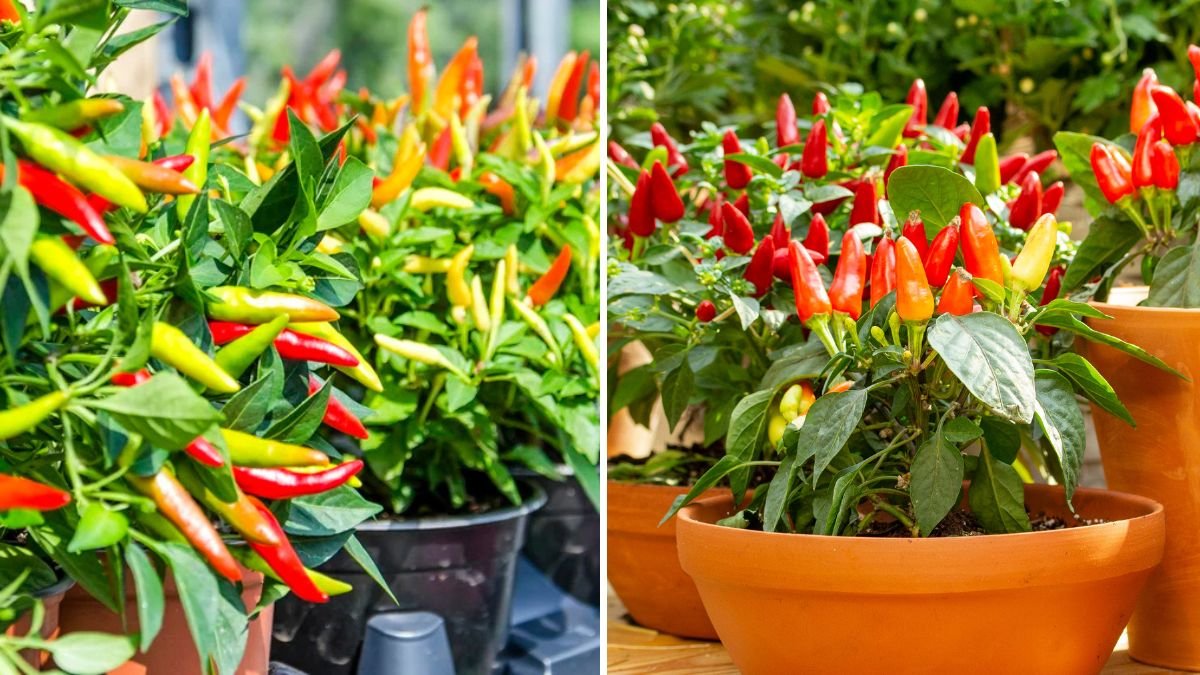Chillies are a popular kitchen staple that adds flavor, color, and spice to a variety of dishes. Growing chillies in compact containers allows urban gardeners, apartment dwellers, and small-space enthusiasts to enjoy fresh, homegrown produce without a traditional garden. With proper care, even small pots can produce abundant, healthy chilli plants, making container cultivation an ideal solution for limited spaces.
This guide provides step-by-step instructions for selecting containers, choosing chilli varieties, soil preparation, planting, care, and harvesting techniques to successfully grow chillies in compact containers.
Why Grow Chillies in Containers?
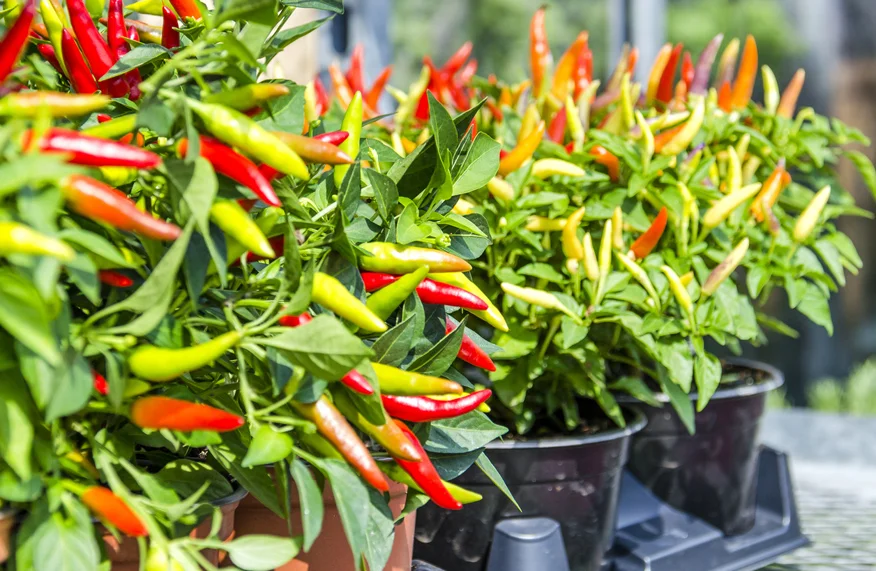
Container-grown chillies have numerous advantages:
- Space Efficiency: Ideal for balconies, patios, and small terraces.
- Mobility: Containers can be moved to optimize sunlight exposure or protect plants from harsh weather.
- Controlled Growth: Containers limit plant size, making management and harvesting easier.
- Pest and Disease Management: Isolation in containers reduces soil-borne diseases and pest infestations.
- Year-Round Gardening: Containers can be brought indoors or into greenhouses to extend the growing season.
Container cultivation transforms even the smallest spaces into productive chilli gardens.
Step 1: Choosing the Right Chilli Varieties
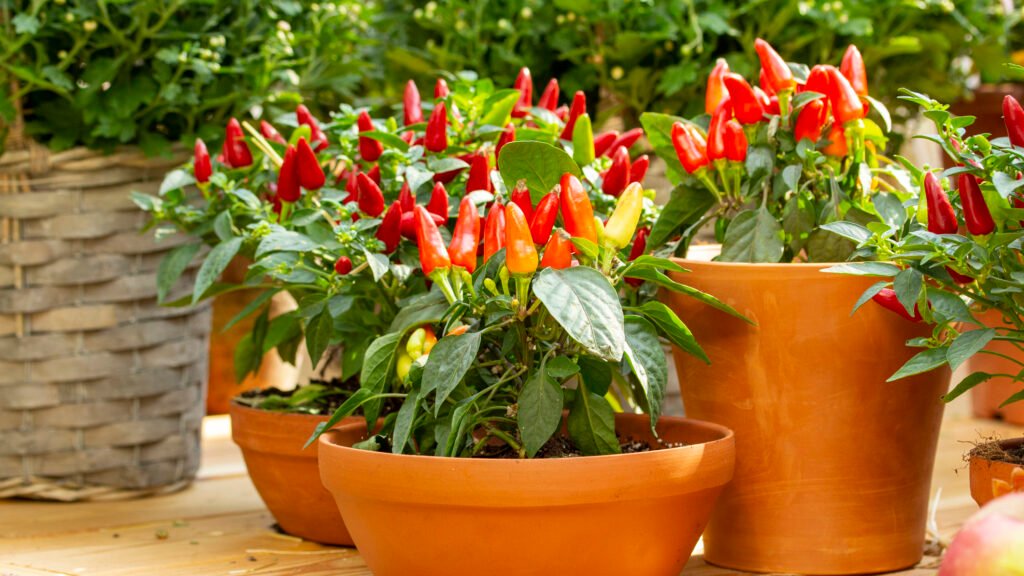
Compact containers are best suited for small to medium chilli varieties:
- Compact Varieties: ‘Numex Twilight’, ‘Cayenne’, ‘Tabasco’, ‘Thai Hot’
- Bush Types: ‘Jalapeño’, ‘Serrano’, ‘Fresno’
- Ornamental Chillies: Small, colorful varieties like ‘Bolivian Rainbow’ or ‘Chilly Chili’ add aesthetic value.
Select varieties based on desired spice level, growth habit, and available sunlight.
Step 2: Selecting Compact Containers
Choosing the right container is essential for chilli growth:
- Size: Use containers 8–12 inches deep and 10–14 inches wide per plant. Larger pots support bigger root systems and higher yields.
- Material: Plastic, terracotta, or ceramic pots all work. Plastic retains moisture longer, while terracotta allows for better aeration.
- Drainage: Ensure containers have adequate drainage holes to prevent waterlogging and root rot.
- Shape: Round or square containers work; wider containers encourage bushier growth.
Proper container selection ensures healthy root development and prevents overwatering issues.
Step 3: Soil Preparation
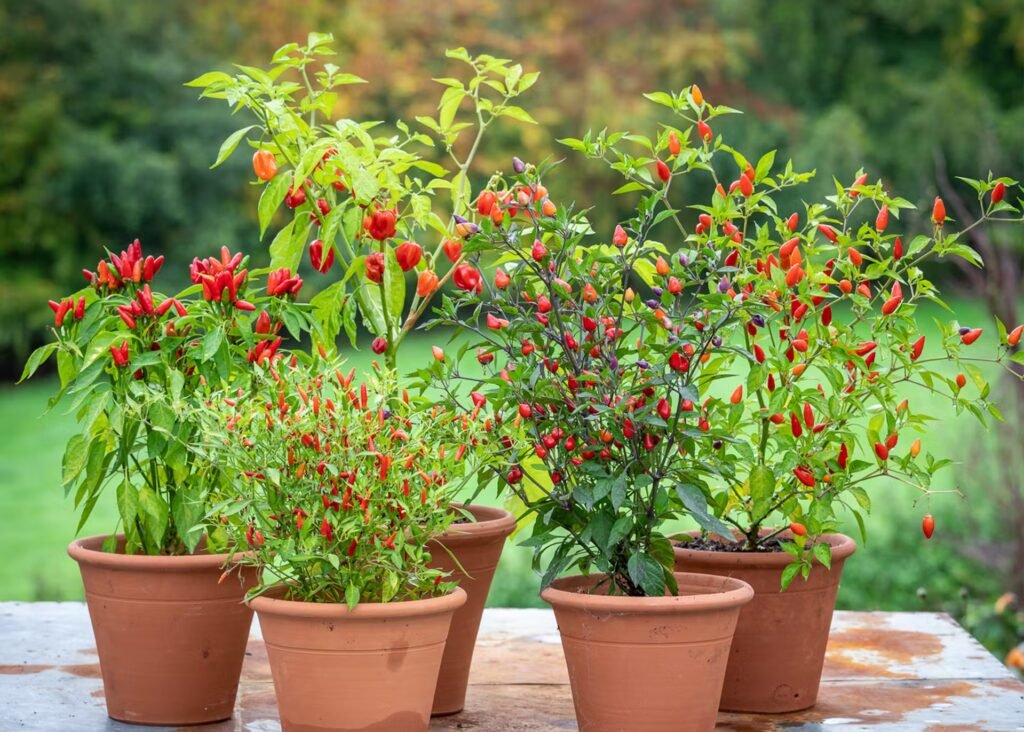
Chillies thrive in well-draining, nutrient-rich soil:
- Use Potting Mix: Avoid heavy garden soil, which can compact and retain too much water.
- Enhance Drainage: Add perlite, vermiculite, or coarse sand to prevent soggy soil.
- Organic Matter: Incorporate compost or well-rotted manure for slow-release nutrients.
- pH Level: Chillies prefer slightly acidic to neutral soil (pH 6.0–6.8).
A well-prepared soil mix ensures healthy root growth, proper nutrient uptake, and robust plant development.
Step 4: Planting Chillies in Containers
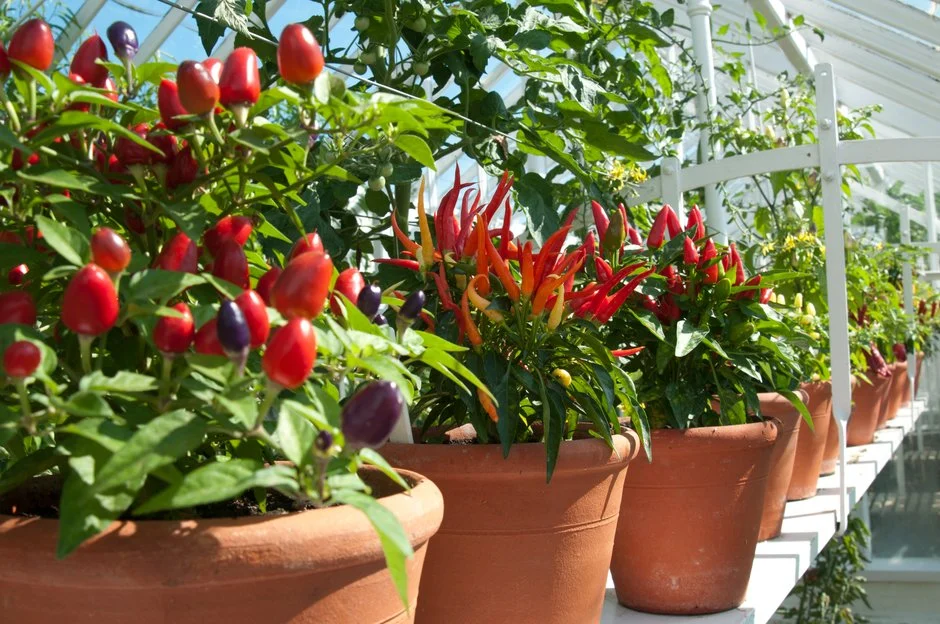
Proper planting techniques are key to healthy chilli plants:
- Seed or Seedling:
- Start from seeds indoors 6–8 weeks before the last frost, or use healthy nursery seedlings.
- Planting Depth: Sow seeds 1/4 inch deep or plant seedlings at the same depth as they were in the nursery container.
- Spacing: Allow at least 8–12 inches between plants in larger containers to prevent crowding.
- Firm Soil: Gently firm the soil around the roots but avoid compacting it too much.
Correct planting ensures strong root systems and vigorous growth.
Step 5: Sunlight and Location
Chillies are sun-loving plants that require proper light to thrive:
- Full Sun: Provide 6–8 hours of direct sunlight daily. Insufficient light reduces flowering and fruit production.
- Indoor Placement: If grown indoors, use south-facing windows or supplement with grow lights.
- Air Circulation: Avoid stagnant areas; proper airflow reduces fungal problems and strengthens stems.
Optimal sunlight and airflow boost flowering, fruiting, and overall plant health.
Step 6: Watering Practices
Watering correctly is crucial for container-grown chillies:
- Consistent Moisture: Keep the soil evenly moist but not waterlogged.
- Check Soil: Water when the top 1–2 inches feel dry. Overwatering can cause root rot.
- Bottom Drainage: Allow water to drain freely from the pot to prevent stagnant moisture.
- Mulching: Add a thin layer of mulch to retain soil moisture and regulate temperature.
Proper watering ensures healthy roots, lush foliage, and abundant fruit.
Step 7: Fertilization and Nutrition
Container chillies require regular feeding:
- Balanced Fertilizer: Use a slow-release or liquid fertilizer high in potassium and phosphorus to encourage flowering and fruiting.
- Frequency: Fertilize every 2–3 weeks during the growing season.
- Organic Alternatives: Compost tea, fish emulsion, or seaweed extract can enhance growth naturally.
- Avoid Excess Nitrogen: Too much nitrogen promotes foliage growth at the expense of flowers and fruits.
Balanced nutrition ensures strong growth, vibrant flowers, and high yields.
Step 8: Supporting and Pruning
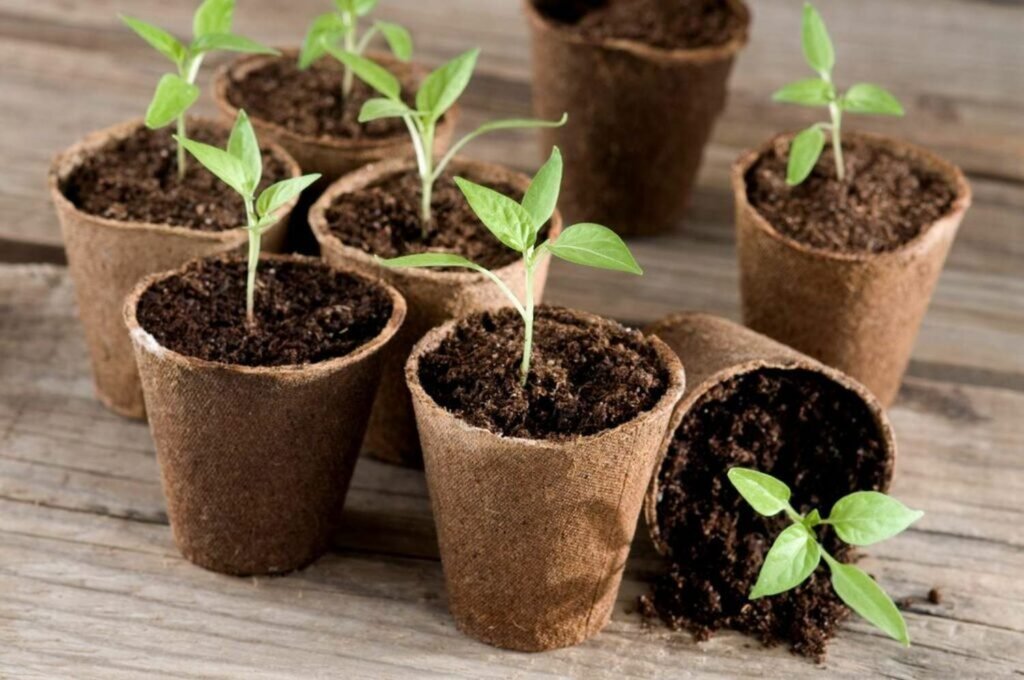
Even compact chilli varieties benefit from support:
- Staking: Use small stakes or bamboo sticks to support plants, especially when fruiting.
- Pruning: Remove dead leaves and trim excessive foliage to improve airflow and light penetration.
- Pinching Tips: Encourage bushier growth by pinching back the top of young plants.
Proper support and pruning increase yield and prevent plant stress.
Step 9: Pest and Disease Management
Container-grown chillies can attract pests:
- Common Pests: Aphids, whiteflies, spider mites, and thrips.
- Preventive Measures: Use neem oil, insecticidal soap, or organic sprays.
- Disease Prevention: Avoid overwatering and ensure good airflow to prevent fungal infections like powdery mildew.
Monitoring and early intervention protect your plants and ensure healthy harvests.
Step 10: Harvesting Chillies
Harvesting correctly improves production and flavor:
- Timing: Pick chillies when they reach desired color and size; most varieties are harvested green or fully ripened red.
- Frequency: Regular harvesting encourages continuous flowering and fruiting.
- Technique: Use scissors or pinch pods carefully to avoid damaging stems.
- Storage: Chillies can be stored in the refrigerator, dried, or frozen for longer use.
Frequent harvesting maximizes yield and ensures flavorful, fresh chillies.
Tips for Success in Compact Containers
- Choose Compact Varieties: Avoid sprawling varieties in small pots.
- Rotate Containers: Prevent soil-borne diseases by refreshing soil annually.
- Use Self-Watering Pots: Helps maintain consistent moisture in compact containers.
- Monitor Growth: Watch for nutrient deficiencies or signs of stress.
- Combine with Companion Plants: Basil, marigolds, or parsley can help deter pests naturally.
Following these strategies optimizes space, growth, and harvest quality.
Conclusion
Growing chillies in compact containers is a practical and rewarding approach for small-space gardeners. By selecting the right varieties, using suitable containers, preparing well-draining soil, providing adequate sunlight, and maintaining proper watering and fertilization, gardeners can enjoy bountiful, flavorful chillies right at home.
Compact container cultivation not only makes urban gardening feasible but also allows for better control over plant health, pest management, and harvesting convenience. With attention to detail, patience, and consistent care, your container-grown chillies can thrive, providing fresh, homegrown spice for cooking year-round.
Even the smallest balcony or patio can become a vibrant chilli garden, transforming your space into a productive and flavorful oasis.
